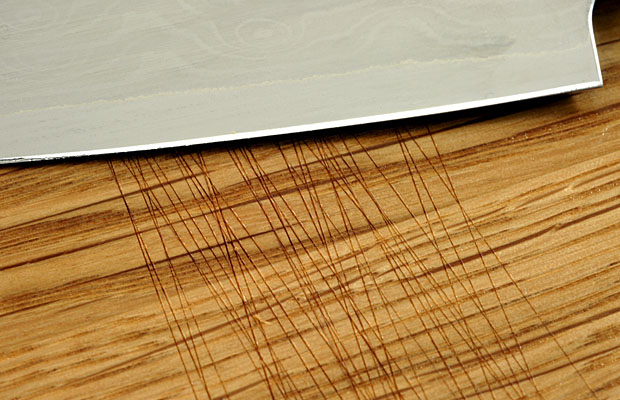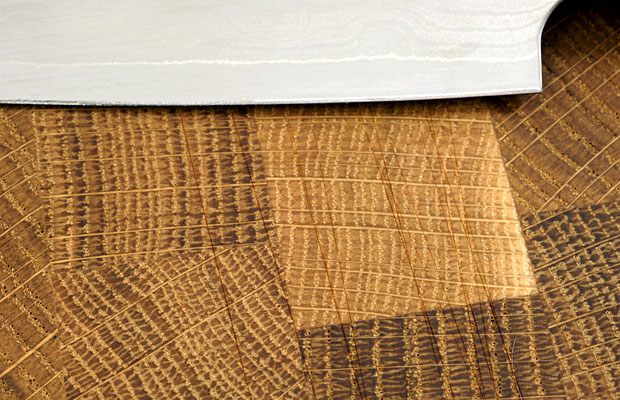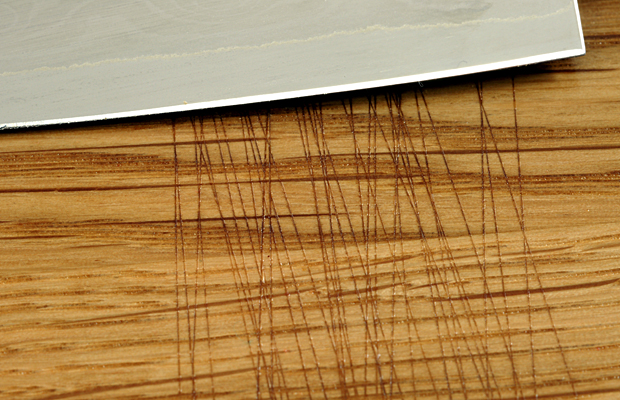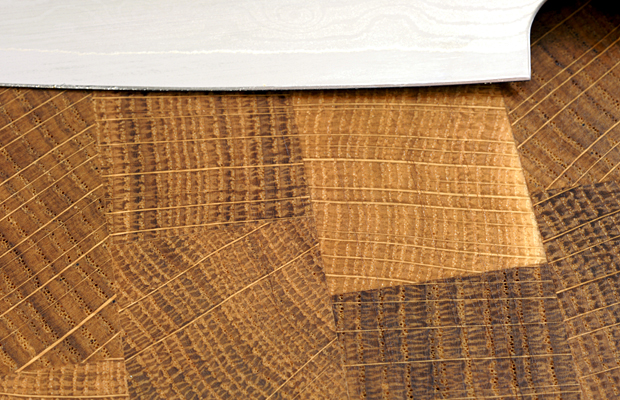End Grain Cutting Boards disinfection
- Written by Super User
- Category: Recomendations
- Hits: 834
If you are interested in saving your board usability we recommend you to treat the board with mineral oil. This procedure is advised to prevent mold, growth of bacteria and odor absorbing. We do warn you – use only mineral oil but vegetable one due to its rancidification.
To treat the board with oil just pour and rub it on all surfaces with soft cloth. Please, do not be afraid of overflowing – wood cannot soak up more oil than it able to soak up. Then dry the exessess with cloth.
It is possible to improve the board with adding beeswax on oil. The beeswax for a long time is used to make wood smooth, soft, waterproofing and more durable.
To get a composition take 4 parts of oil and 1 part of beeswax.
There is two ways to mix ingredients:
- Heat the oil in bain marie then add beeswax chips
- Put the mixture in the microwave to 30-45 sec
Then rub up the mix.
Unlike with pure oil, cooling it fills in each pore and split, achieving smooth, firm and durable surface that yield to polishing with cloth.
Making a point – the composition could be heated and used as effective as before.
It is necessary to treat with oil (or mixture) the board at least 3 times with 5-6 hour interval – the oil should soak in. The treating procedure is recommended to repeat monthly.
Let’s get acquainted with another ways of care:
- Vinegar - strong white vinegar can be used to disinfect your cutting board keeping it free of Escherichia coli, Salmonella, Staphylococcus. It is mostly advised to people with chemical allergy.
- Hydrogen Peroxide – use 3 percent solution to rub the board after treating it with vinegar.
- Bleach – if you need to disinfect the wood cutting board you can do so by mixing a diluted bleach solution. Prepare a mixture of 1 litre of water and one cup bleach. Wipe the cutting surface down with your bleach solution then rinse off. Immediately wipe the board off and set it upright to dry. Any bacteria will not survive in dryness.
- Salt and Backing Soda - spread Salt or Baking Soda over the cutting surface of the board. Allow it to stand on the board to a couple of minutes before brushing off and rinsing.
- Lemon juice – rub the board with the juice. In a few minutes wipe, wash and rub the board with dry cloth. This way neutralizes strong odors like onion, garlic, fish etc.





